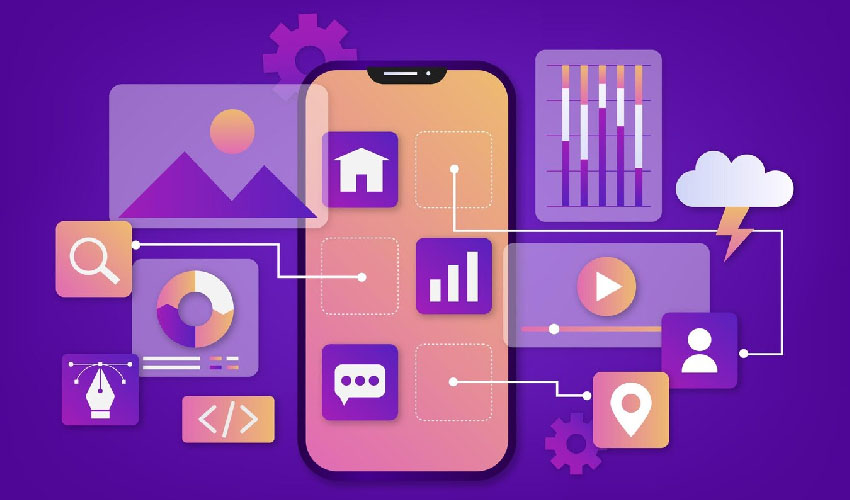Table of Contents
Introduction to Netflix Clone Development
In the fast-paced digital era, where streaming services have become an integral part of our entertainment landscape, the demand for personalized content consumption has surged. As a result, the development of Netflix clones has gained immense popularity among entrepreneurs aiming to tap into the flourishing on-demand video streaming market. In this article, we will delve into the intricacies of Netflix clone development, exploring the key aspects and considerations that go into creating a seamless streaming experience.
Understanding the Concept of Netflix Clone
A Netflix clone is essentially a custom-built application or website that replicates the features and functionalities of the original Netflix platform. The objective is to provide users with a similar streaming experience, allowing them to access a vast library of movies, TV shows, documentaries, and other content on-demand. While the concept might seem straightforward, the development process involves several crucial steps to ensure a high-quality, user-friendly, and secure platform.
Key Features of a Netflix Clone
- User Authentication and Profiles: Implementing a robust user authentication system is paramount to ensure secure access. Additionally, allowing users to create and manage profiles enhances the personalization of content recommendations.
- Intuitive User Interface: A clean and user-friendly interface is crucial for a successful Netflix clone. Smooth navigation, visually appealing layouts, and easy content discovery create an engaging user experience.
- Content Management System: Efficiently managing a vast library of multimedia content requires a robust content management system (CMS). This system should allow for easy categorization, tagging, and updating of content.
- Search and Recommendation Engine: An advanced search functionality and recommendation engine powered by algorithms are essential components. These features enhance user satisfaction by offering personalized content suggestions based on viewing history and preferences.
- Multilingual and Multi-currency Support: To cater to a global audience, incorporating multilingual support and the ability to transact in multiple currencies is crucial for expanding the user base.
- Multiple Device Compatibility: Ensure your Netflix clone is accessible across various devices, including smartphones, tablets, smart TVs, and desktops. This ensures a seamless viewing experience for users on different platforms.
Technology Stack for Netflix Clone Development
Developing a Netflix clone involves choosing the technology stack to ensure scalability, security, and optimal performance. Some key components include:
- Frontend: React.js or Angular for responsive and dynamic user interfaces.
- Backend: Node.js, Django, or Ruby on Rails for a scalable and efficient backend infrastructure.
- Database: MongoDB, MySQL, or PostgreSQL for reliable data storage and retrieval.
- Cloud Services: Leveraging cloud platforms like AWS or Azure for scalability and reliability.
Monetization Strategies
Monetizing your Netflix clone is a crucial aspect of the development process. Consider implementing subscription-based models, pay-per-view options, or a combination of both to generate revenue. Additionally, partnerships with advertisers or integration of in-app purchases can contribute to the financial success of your streaming platform.
Key Features and Functionality of a Netflix Clone
In the dynamic realm of online streaming services, the popularity of platforms like Netflix has paved the way for the emergence of Netflix clones. These replicas aim to capture the essence of the renowned streaming giant while incorporating unique features to stand out in the competitive market. In this article, we will delve into the key features and functionality of a Netflix clone, shedding light on what makes these platforms a compelling choice for avid binge-watchers.
1. User-Friendly Interface: A Netflix clone prioritizes a user-friendly interface, ensuring seamless navigation for viewers. The layout typically mirrors the simplicity of Netflix, allowing users to effortlessly explore content categories, browse through recommendations, and access their watchlists with ease.
2. Multi-Device Compatibility: One of the hallmark features of a Netflix clone is its compatibility across multiple devices. Whether users prefer streaming on a desktop, laptop, tablet, or smartphone, a well-designed clone ensures a consistent and optimized viewing experience across all platforms.
3. Content Categorization and Recommendations: To enhance user engagement, a Netflix clone employs advanced algorithms to categorize content efficiently. Users can expect personalized recommendations based on their viewing history and preferences, creating a curated and enjoyable content discovery experience.
4. Seamless Registration and User Profiles: A Netflix clone streamlines the registration process, allowing users to create profiles effortlessly. Each user can personalize their profiles, enabling the platform to tailor content recommendations and keep track of their watch history.
5. Content Delivery and Streaming Quality: Ensuring a high-quality streaming experience is a top priority for a Netflix clone. These platforms invest in robust content delivery networks (CDNs) to minimize buffering and optimize streaming speeds. Additionally, users can usually adjust video quality settings based on their internet connection.
6. Payment Integration and Subscription Management: Similar to Netflix, a clone integrates secure payment gateways for subscription management. This allows users to easily subscribe, upgrade, or cancel their plans, fostering a hassle-free user experience.
7. Search and Filter Functionality: To cater to diverse preferences, a Netflix clone incorporates powerful search and filter functionalities. Users can efficiently search for specific titles, genres, or actors, making it convenient to find content tailored to their tastes.
8. Offline Viewing Feature: Recognizing the importance of flexibility, many Netflix clones include an offline viewing feature. This allows users to download content for later consumption, catering to those who may not always have a stable internet connection.
9. Social Media Integration: Enhancing the social aspect of streaming, some Netflix clones integrate social media features. Users can share their favorite shows or movies, see what their friends are watching, and engage in discussions within the platform.
10. Security and Privacy Measures: A Netflix clone prioritizes the security and privacy of its users. Robust encryption techniques safeguard user data, and secure authentication processes ensure that only authorized individuals can access the account.
User Experience (UX) Optimization in Netflix Clones
In the ever-evolving landscape of online streaming platforms, creating a user experience (UX) that captivates and retains viewers is crucial. Netflix, being a pioneer in this industry, has set high standards for UX design. For those looking to emulate its success, optimizing the user experience in Netflix clones is paramount. In this article, we’ll explore key strategies to enhance UX in Netflix-like platforms, ensuring they not only attract but also engage and satisfy their audience.
- Intuitive Navigation: In the realm of streaming services, ease of navigation is paramount. Netflix’s success lies in its intuitive user interface, allowing users to effortlessly discover and access content. In Netflix clones, it’s essential to replicate this simplicity. Implement a user-friendly navigation system, ensuring that users can quickly browse through categories, access search features, and personalize their viewing preferences.
- Personalization Algorithms: Netflix’s recommendation engine, powered by advanced algorithms, is a cornerstone of its success. Tailoring content suggestions based on user preferences and viewing history enhances the overall experience. Implement robust personalization algorithms in Netflix clones to provide users with relevant and engaging content suggestions, thereby increasing user retention.
- Responsive Design: With users accessing streaming platforms from various devices, ensuring a responsive design is crucial. Netflix adapts seamlessly to different screen sizes, enhancing accessibility. Netflix clones must prioritize responsive design, optimizing the viewing experience across smartphones, tablets, and desktops.
- Content Categorization: Netflix excels in categorizing content into genres, making it easier for users to find what they want. Mimic this strategy in Netflix clones by organizing content into well-defined categories. Implementing filters and sorting options further refines the user experience, making it more personalized and enjoyable.
- Streaming Quality: One of the critical aspects of user satisfaction is the quality of streaming. Netflix delivers high-quality video content, and Netflix clones should strive to do the same. Invest in robust streaming infrastructure, offering users seamless playback without buffering issues, ensuring a superior viewing experience.
- User Feedback and Ratings: Netflix values user feedback and integrates it into its platform, allowing viewers to rate content and provide reviews. Incorporate similar features in Netflix clones to empower users and make them feel heard. This not only enhances engagement but also aids in refining content recommendations.
- Accessibility Features: To cater to a diverse audience, Netflix incorporates accessibility features such as subtitles, audio descriptions, and multiple language options. Including these features in Netflix clones ensures a more inclusive user experience, accommodating individuals with different needs and preferences.
- Security and Privacy: Upholding user trust is crucial in any streaming service. Implement robust security measures to protect user data and privacy. Clearly communicate your platform’s privacy policy to build trust with users and encourage them to engage more freely with the platform.
Cross-Platform Compatibility and Responsive Design
In the fast-paced world of technology, where users access websites and applications on a myriad of devices, ensuring cross-platform compatibility and implementing responsive design has become imperative for web developers. This article delves into the significance of these two aspects and how they contribute to a seamless user experience and improved search engine visibility.
Understanding Cross-Platform Compatibility
Cross-platform compatibility refers to the ability of a website or application to function consistently across different operating systems and devices. With users accessing content on smartphones, tablets, laptops, and desktops, developers must ensure that their creations offer a uniform experience regardless of the platform. This not only enhances user satisfaction but also expands the reach of the website.
Ensuring cross-platform compatibility involves optimizing code and design elements to adapt to various screen sizes, resolutions, and operating systems. This requires thorough testing on different devices and browsers to identify and address any compatibility issues. In doing so, developers can create a versatile and accessible digital presence that caters to a diverse audience.
The Significance of Responsive Design
Responsive design is a key component of cross-platform compatibility. It involves crafting websites that automatically adjust their layout and content based on the screen size and orientation of the device. This fluid approach allows for a seamless transition from large desktop screens to smaller smartphone displays, providing users with an optimal viewing experience.
The benefits of responsive design extend beyond user experience. Search engines like Google prioritize mobile-friendly websites, considering mobile-first indexing in their ranking algorithms. Websites that are not optimized for mobile devices may experience a drop in search engine rankings, potentially limiting their visibility to users.
Achieving SEO Optimization Through Responsive Design
As search engines aim to deliver the best possible results to users, they favor websites that provide a positive experience across devices. Responsive design not only caters to user preferences but also aligns with search engine optimization (SEO) best practices. A mobile-friendly website is more likely to rank higher in search results, driving organic traffic and increasing the site’s overall visibility.
Responsive design also simplifies the maintenance of websites, as developers can update content and implement changes across all platforms simultaneously. This not only saves time but also ensures consistency in messaging and branding.
Monetization Strategies for Netflix Clones
In the ever-evolving landscape of online streaming services, creating a Netflix clone can be a lucrative venture. However, to ensure sustained growth and profitability, it’s crucial to implement effective monetization strategies. In this article, we’ll explore some innovative approaches to maximize revenue for your Netflix clone while keeping your audience engaged.
1. Subscription Tiers and Pricing Models
Diversifying subscription plans and pricing models is an effective way to cater to different user segments. Consider offering basic, standard, and premium plans with varying features and streaming quality. Introduce trial periods or discounted rates for new subscribers to encourage sign-ups and provide a taste of the premium experience.
2. Original Content Investment
Investing in exclusive and original content can set your Netflix clone apart from competitors. Develop partnerships with filmmakers, writers, and producers to create unique shows and movies that can only be accessed on your platform. This exclusive content can drive user acquisition and retention, giving subscribers a reason to stay.
3. Ad-Supported Streaming
Incorporate an ad-supported model to tap into a wider audience base, including users who may be hesitant to commit to a subscription. Offer a free, ad-supported version of your platform with limited access to content, encouraging users to upgrade to an ad-free premium subscription for a seamless viewing experience.
4. Partnerships and Cross-Promotions
Forge strategic partnerships with other businesses to cross-promote services and products. Collaborate with telecommunications companies, internet service providers, or even food delivery services to offer bundled packages or exclusive discounts. Such partnerships can enhance brand visibility and attract a larger user base.
5. Merchandising and Product Integration
Create an additional revenue stream by introducing merchandising related to popular shows or movies on your platform. Sell branded merchandise such as clothing, accessories, or collectables directly through your streaming service. Additionally, explore product integration opportunities, allowing users to purchase items featured in the content they are watching.
6. Gamification and Interactive Features
Implement gamification elements and interactive features to enhance user engagement. Introduce quizzes, polls, or interactive storylines that allow users to influence the direction of a show. This not only adds a unique dimension to the viewing experience but also opens up opportunities for sponsored content and product placements within the interactive elements.
7. Data Monetization
Leverage user data responsibly to generate additional revenue streams. Analyze viewer preferences and behaviour to offer targeted advertising opportunities to businesses. Ensure compliance with privacy regulations and prioritize user consent to build trust while utilizing data to enhance the overall streaming experience.
Deployment and Hosting Considerations
In the ever-evolving landscape of technology, successful deployment and hosting of applications have become pivotal for businesses striving to stay ahead of the curve. Whether you’re launching a new website, mobile app, or a complex software solution, understanding the nuances of deployment and hosting is paramount. In this article, we’ll explore the key considerations to ensure a seamless and efficient deployment process, coupled with robust hosting strategies.
Choosing the Right Deployment Model: Before delving into hosting, it’s essential to decide on the deployment model that aligns with your project requirements. Options range from traditional on-premises deployments to cloud-based solutions. Cloud platforms, such as AWS, Azure, and Google Cloud, offer scalability, flexibility, and cost-effectiveness, making them popular choices for modern applications.
Version Control and Continuous Integration: Implementing a robust version control system, such as Git, is crucial for managing changes to your codebase. This ensures that multiple developers can collaborate seamlessly while maintaining a record of every modification. Additionally, incorporating continuous integration (CI) tools, like Jenkins or Travis CI, streamlines the development pipeline by automating testing and integration processes. This not only accelerates development but also enhances the overall reliability of the application.
Scalability: Scalability is a pivotal factor, especially in today’s dynamic digital landscape. Consider the potential growth of your user base and design your hosting infrastructure to scale horizontally or vertically based on demand. Cloud platforms offer auto-scaling features, allowing resources to adjust dynamically, ensuring optimal performance during peak periods while minimizing costs during periods of low activity.
Security: Security should be at the forefront of deployment and hosting considerations. Implementing HTTPS, using secure communication protocols, and regularly updating dependencies are critical steps. Additionally, employing firewalls, intrusion detection systems, and routine security audits bolster the overall security posture of your application.
Load Balancing: In distributed systems, load balancing plays a vital role in distributing incoming traffic across multiple servers. This not only enhances the performance and responsiveness of your application but also ensures fault tolerance. Cloud providers often offer load-balancing services that can be easily configured to suit your application’s needs.
Data Management and Storage: Choosing the right database and storage solutions is imperative for a successful deployment. Consider the nature of your data and opt for databases that align with your application’s requirements. Cloud-based storage solutions, such as Amazon S3 or Google Cloud Storage, provide scalable and durable options for managing large volumes of data.
Cost Optimization: Cost considerations are integral to any hosting strategy. Cloud providers offer various pricing models, including pay-as-you-go and reserved instances. Conduct a thorough analysis of your application’s resource requirements to optimize costs without compromising performance. Utilize monitoring tools to track resource usage and identify opportunities for efficiency improvements.
Post-Launch Maintenance and Updates for Netflix Clones
In the ever-evolving realm of online streaming services, creating a Netflix clone is a promising venture. However, the journey doesn’t end with the launch. To ensure sustained success and user satisfaction, meticulous post-launch maintenance and regular updates are imperative. In this article, we delve into the significance of post-launch maintenance for Netflix clones and how it contributes to the platform’s longevity.
-
Bug Fixes and Performance Optimization
Post-launch, one of the primary focuses should be on identifying and rectifying any bugs or glitches. Regular monitoring and user feedback play a crucial role in this process. Addressing issues promptly enhances the overall user experience, preventing potential frustration and ensuring smooth navigation through the platform.
Additionally, continuous performance optimization is essential. As user traffic fluctuates, the system must adapt to varying loads, ensuring that streaming remains seamless regardless of the number of concurrent users. This not only boosts user satisfaction but also safeguards the platform’s reputation.
-
Security Updates
Given the sensitive nature of user data and the constant evolution of cyber threats, prioritizing security updates is non-negotiable. Regularly updating security protocols and addressing vulnerabilities helps safeguard user information, thereby building trust among the user base. A breach in security can be detrimental to the success of the platform, making proactive security measures crucial.
-
Content Updates and User Engagement
To keep users engaged and attract new audiences, regular content updates are essential. This involves not only adding new titles but also removing outdated or unpopular content. Analyzing user preferences and incorporating trending content can significantly enhance the platform’s appeal.
Moreover, engaging with users through surveys or feedback forms helps in understanding their preferences better. Implementing user-suggested features or improvements demonstrates a commitment to providing a tailored and enjoyable streaming experience.
-
Technology Upgradation
As technology evolves, so should the Netflix clone. Regularly updating the technology stack ensures compatibility with the latest devices and operating systems. This guarantees that users can access the platform seamlessly from various devices, contributing to a broader user base.
Additionally, staying abreast of technological advancements enables the integration of new features or improvements in streaming quality, thereby staying competitive in the dynamic streaming industry.
-
Legal Compliance
Adhering to copyright laws and licensing agreements is paramount for the sustained operation of a streaming platform. Regularly updating content licenses and ensuring compliance with regional regulations prevents legal complications that could potentially lead to the shutdown of the platform. This diligence is essential for the long-term viability of the Netflix clone.
Thanks for reading our post “Netflix Clone Development”. Please connect with us to learn more about the Netflix Clonebe.























